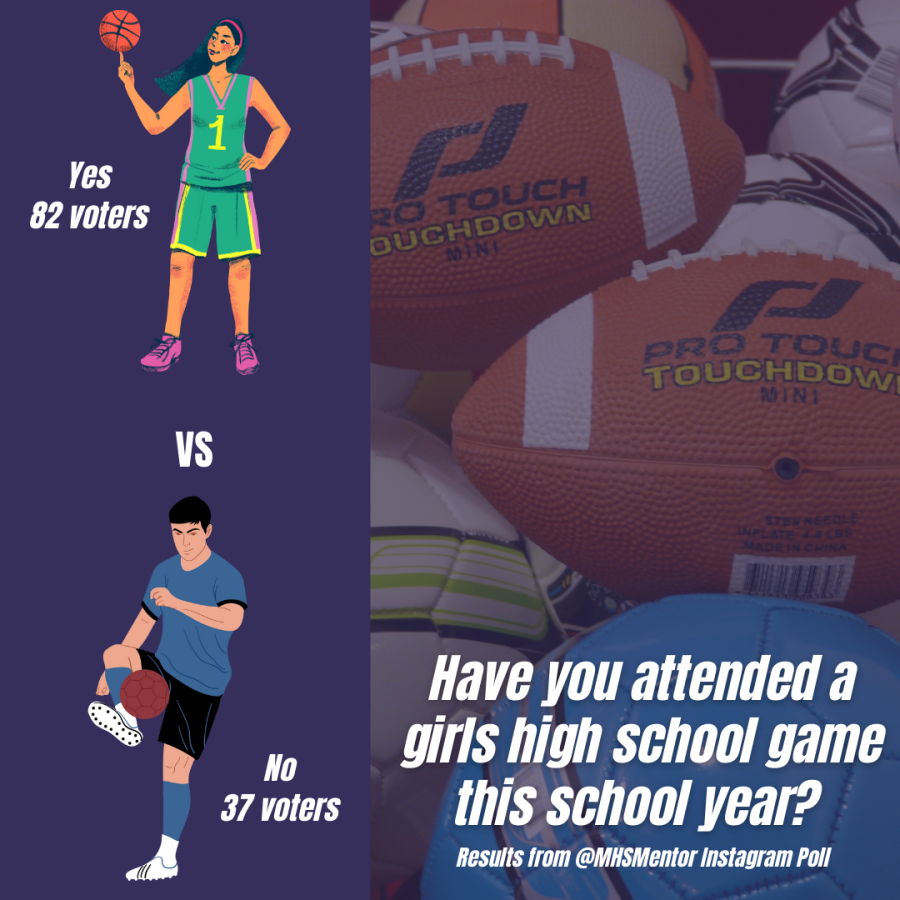Girls sports deserves more support
March 3, 2022
The U.S. women’s soccer team made a historical development in sports. The fight for equal pay has always been a big issue, especially in sports. The team sued the U.S. Soccer Federation for gender discrimination, and the landmark agreement ended a six-year legal battle over equal pay and resulted in $24 million and bonuses to match that of men.
Even though girls made their mark and continue to fight the stigma surrounding girls in sports, there is still a lack of support and a long way to go to have gender equity in sports.
Womens’ sports are viewed far less, for example: the National Basketball Association has an average of 1.4 million views so far this season, while the Women’s National Basketball Association had an average of 367,000 views for the 2021 WNBA Playoffs.
Manhattan High, like many schools, went through the fight to begin girls sports officially back in the 1970s in a process that was aided greatly by the passing of Title IX in 1972. Girls were involved in athletics as early as the 1920s, with the Girls Athletic Association being established in 1925. However, at some point, that organization ended at MHS, and girls weren’t involved in sports here or at most Kansas high schools for several decades.
In 1970, Kansas State High School Activities Association held the first girls State competition in tennis. Since then, girls have made their impact on sports, winning state titles and setting records. Girls can play in multiple sports, including swim, basketball, softball, tennis, track and field and cross country, amongst others.
At MHS, taking a look at basketball, boys crowds tend to, on average, much larger compared to girls basketball. The student sections tend to be smaller at girls games, and there doesn’t seem to be much discussion of the accomplishments of girls as much as the boys.
The Manhattan Editorial board believes there is more the administration and students could do to support and change the attitude towards girls sports.
The scheduling for girls sports impacts the crowd size. Boys Varsity is scheduled around 7:45 p.m., around the time families are done with dinner and can feasibly make the game. Girls Varsity is scheduled around 6 p.m., when most families are eating or preparing dinner.
The rotation for practice switches, allowing the two teams to practice interchangeably at certain times. This can easily be applied to the games, allowing for girls basketball to start at 7:45, so more people can attend.
There is significantly less publicity and “hype” for girls sports. Announcements always talk about supporting boys games and have themes, like “Pink Out” or “School Colors” for the games. Girls teams are hardly recognized, usually getting a small place in the announcements for something they did at the meet. There are more posters and banners that are meant to bring attention to girls sports, but in comparison to pep rallies and attitude, girls sports are overlooked.
Students as well show far less support for girls sports. The current scores for basketball have the girls Varsity team standing at 8-12 and boys at 7-13. Girls are currently ahead of the boys, but that hasn’t garnered more support. The crowd difference doesn’t make sense when you look at the current record.
Students should put forth more effort to attend the girls games, since they can still hang out with their friends and be there to support the team. If they can do it at boys games, there isn’t any reason why they can’t do it at girls games.
The overarching attitude towards girls sports is negative and ignorant. People don’t view girls sports as a whole as important as boys sports; they constantly compare girls to boys, but never boys to girls, they comment on their appearance, ranging from attire to body build. The attitude perpetuates the idea that men are the standard and everyone else should live up to their abilities and their success.
The way people view girls sports, whether that be at the game, in front of the television, in any setting, needs to change. Girls deserve just as much support and attention as the boys do, without comparing them.




